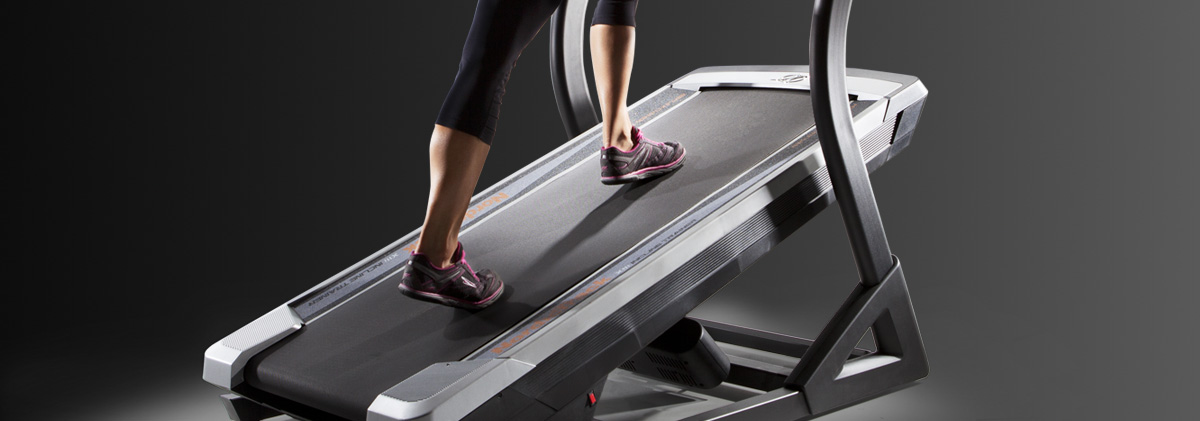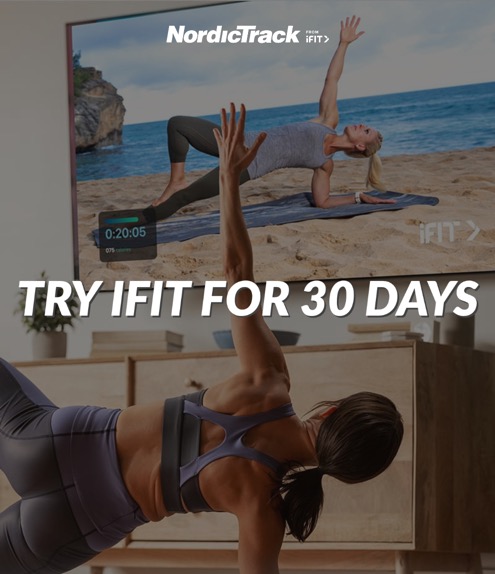
You’ve suffered a setback of some kind. It could be a physical injury, or perhaps it’s sickness-related. No matter what the ailment, rehabilitation is tough. There’s a lot of work to do, and often times you have to visit a specialist to do it. That’s exactly why you might want to consider getting a treadmill for home rehabilitation. Fact is that if you have a piece of exercise equipment in your home, you’re 73 percent more likely to exercise, and a treadmill has versatility that can help you build cardiovascular health at a variety of intensities.
Let’s take a look at the benefits and how you could implement a treadmill for home rehab as you prepare to make your comeback.
Why A Treadmill
When it comes to your health, a treadmill can be one of your most powerful tools. For starters, it’s versatile, so whether you’re recovering from a serious illness and need to take it easy or you’re sidelined with a shoulder injury and want to put in some aggressive miles, a treadmill can meet your demands. The benefits are off the charts:
- When recovering from a stroke, home exercise has shown to be just as effective as a rehab facility.
- Lowers blood pressure.
- Reduction in bad cholesterol and an improvement in good cholesterol.
- Continued use helps you avoid a sedentary lifestyle, which is one of the biggest contributors to cardiovascular disease.
- Lessens your risk of developing diabetes.
- Building cardiovascular fitness can mean a 50 percent reduction in risk of cardiovascular disease.
- Improves your state of mind. Many studies have shown a direct correlation between regular exercise and decreased depression.
While these benefits are tremendous, the truth is that it’s hard to build consistent, daily habits that help you create this type of health in your life. By having a treadmill in your home, it’s right there. You don’t need to leave the house. You don’t need to fight through traffic.
As a result, you’ll be much more likely to create these healthy habits (73 percent, in fact) than if you didn’t have a treadmill around at all.
How To Implement
So you know it’s good for you to have a treadmill in your home and use it, but knowing that something is good and actually doing it are two different things. So, how do you make it part of your life so you can create a consistent, daily habit? Glad you asked.
Set aside a space for the treadmill.
If your treadmill is right in the middle of a high-traffic area in your home, then you’re going to be less likely to use it. You don’t want to be in anyone else’s way. Conversely, if you have to shimmy through a bunch of storage boxes to get to the back of the garage just to get on the treadmill, you’re not going to be likely to use it very often either. The key is to find a place in your home that’s accessible, but also not in the way. Perhaps a spare bedroom or a bonus room. It also helps if you have a TV or something in the room to give you some entertainment while you’re exercising.
Figure out how much to exercise.
Before you proceed with a regimen, it’s best to consult a doctor and make sure that you’re healthy enough for physical activity. Depending on what you’re rehabbing from, you might need to take it easy and catch up on Netflix until you’re strong enough to exercise. Once you’re ready to go, you can start small with something like 30 minutes a day of moderate exercise.
In many ways “moderate” is a relative term. For some, that could mean jogging. For others, that could mean walking. Typically, you’re aiming for something between 60% and 75% of your maximum effort, but again, consult with your doctor.
Listen to your body.
As you’re rehabbing, make sure you pay attention to how your body is responding. Are you sore the next day? How sore? Is it just soreness, or are you hurting yourself? Are you getting winded or lightheaded at any point while exercising? Keep checking in on your body as you exercise. One of the biggest mistakes people make when they start exercising is pushing their body too fast. Be careful and make sure that you start slowly to avoid the risk of injury. Remember, there’s no rush.
Maintain your motivation.
Has this ever happened to you? You start something (whether it’s exercise, learning another language, or finally writing that novel). At first, things are great. You enjoy the process, and you’re making progress. But, as time passes, it gets harder and harder to keep going, and eventually you stop altogether. Don’t let this happen! Focus on the mental side of things so you keep trucking. Find ways to make the experience varied and entertaining. Also, focus on your reasons for getting started. Often times, those reasons are strong enough to inspire you to keep going, even if you don’t always feel like it.
Check your progress.
Keep track of your improvements. Not only does it help keep you motivated to see how well you’re progressing, but it also helps you identify when it might be time to set your goals a little higher when your results start to plateau. Without keeping track of your progress, you won’t know whether you’re doing well or not. Develop a system of tracking your progress that helps you continue to improve your fitness.
Conclusion
Rehabilitation is difficult. It’s often a grueling process, and it’s easy to get frustrated along the way. By implementing a treadmill at home, you can supplement any work you’re doing with a therapist or medical professional. You can also make it easier to get the exercise you need since the treadmill is right there in the next room, not a car ride across the neighborhood. As long as you’re able to put some of the above items into action, your rehab should end up going a whole lot more smoothly.
DISCLAIMER: This blog post is not intended to replace the advice of a medical professional. The above information should not be used to diagnose, treat, or prevent any disease or medical condition. Please consult your doctor before making any changes to your diet, sleep methods, daily activity, or fitness routine. NordicTrack assumes no responsibility for any personal injury or damage sustained by any recommendations, opinions, or advice given in this article. Always follow the safety precautions included in the owner’s manual of your fitness equipment. Shipping times are dependent on in-stock inventory and delivery timeframes may vary. Make sure to check the website for any specific delays in delivery and shipping.
*Never stand on the walking belt when starting the machine, and remember to always use the safety key when using the treadmill. Please remember to follow all safety precautions that are listed in your treadmill Users Manual.
IFIT DISCLAIMER: iFit requires an internet connection and Wi-Fi to function. You will be required to provide your credit card information upon sign-up for iFit. Your Commitment Period may be month-to-month or twelve (12), eighteen (18), or thirty-six (36) months, depending on your agreement. Terms shall apply to your iFit use and subscription during your Commitment Period and any subsequent Renewal Term. Unless you cancel your account or notify us at least twenty four (24) hours prior to the expiration of your commitment period that you do not wish to renew your subscription, your iFit subscription will automatically renew for an additional month, one (1) year, or two (2) year period, as applicable, for the same duration as your initial commitment period (“The Renewal Term”), and you authorize us to bill the then-applicable membership fee and any taxes to the payment method we have on record for you.
Sources:
https://treadmill.com/treadmill-buying-guide/
http://www.nytimes.com/2009/01/06/health/nutrition/06well.html?_r=0
https://www.nordictrack.com/learn/home-treadmill-training-treadmill-exercises-that-arent-running/
http://www.nejm.org/doi/full/10.1056/NEJMoa1010790#t=article
http://well.blogs.nytimes.com/2015/09/18/ask-well-the-best-exercise-to-reduce-blood-pressure/
http://www.health.harvard.edu/newsletter_article/Walking-Your-steps-to-health
https://www.ncbi.nlm.nih.gov/pmc/articles/PMC2992225/
http://www.livestrong.com/article/522212-a-list-of-the-benefits-of-cardiovascular-endurance/
https://www.ncbi.nlm.nih.gov/pubmed/3454786?dopt=Abstract
https://www.reference.com/health/can-put-treadmill-home-e6c233cae4bad3e
http://www.mayoclinic.org/healthy-lifestyle/fitness/expert-answers/exercise/faq-20057916
http://www.mayoclinic.org/healthy-lifestyle/fitness/in-depth/overuse-injury/art-20045875
http://www.gaiam.com/discover/197/article/5-ways-stay-motivated-exercise-regularly/
https://www.nerdfitness.com/blog/2011/07/07/how-to-track-progress/


